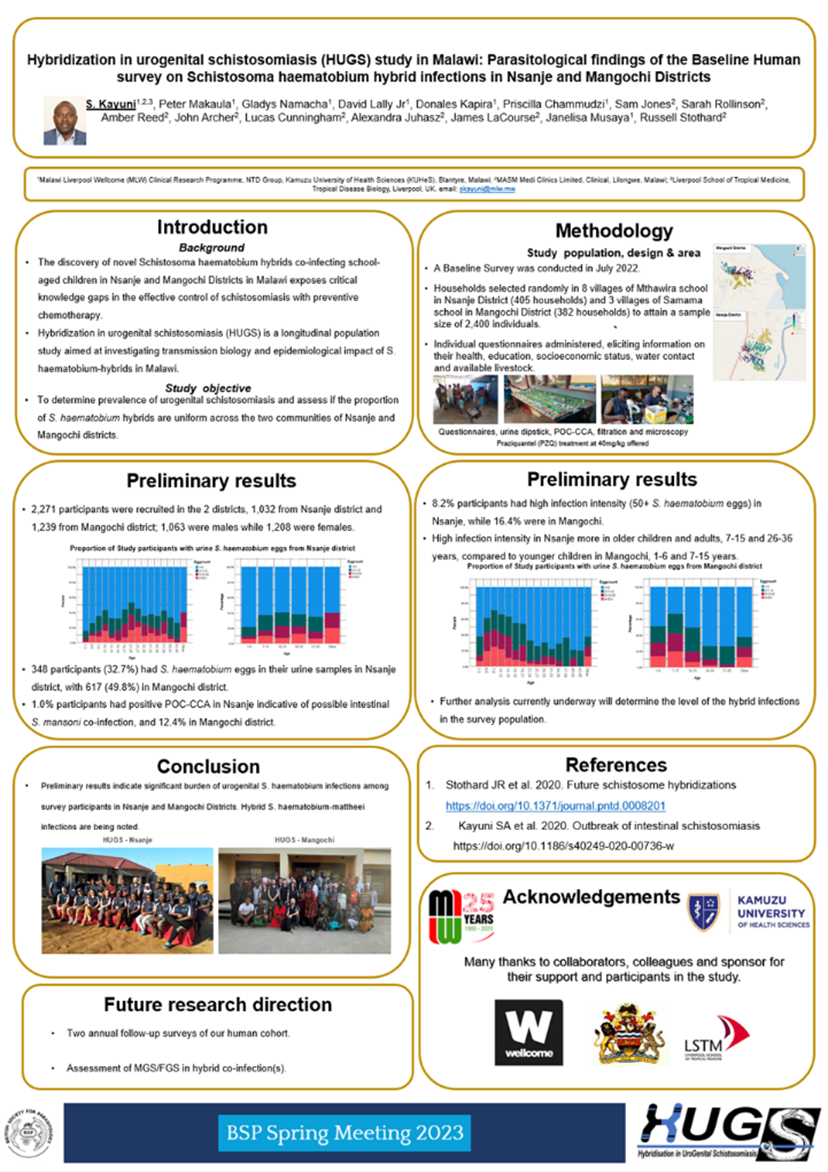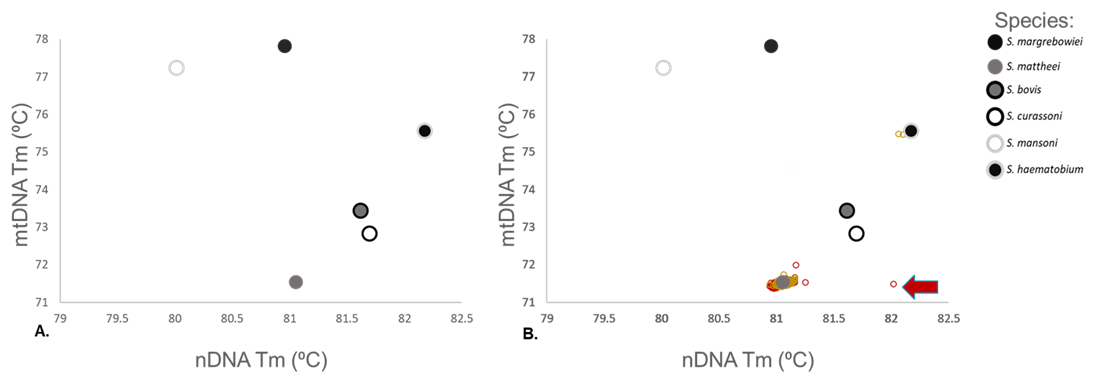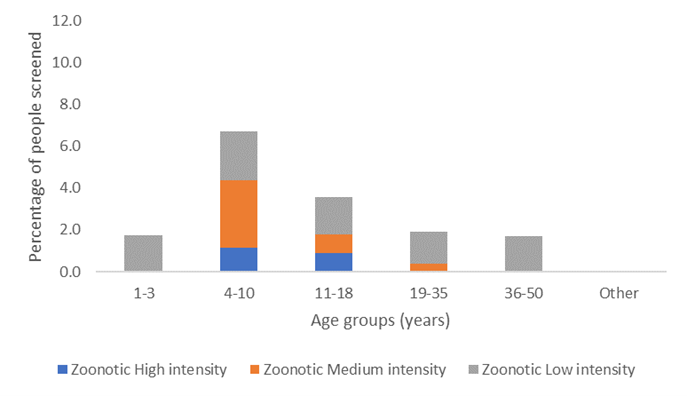This year’s British Society for Parasitology (BSP) Spring Meeting took place in Scotland, as hosted by the University of Edinburgh, from the 11th-14th April 2023. Scotland has had a huge impact on the study of parasitology and tropical disease, producing many famous sons and daughters, for example, Patrick Manson and Robert Leiper, being two early pioneers of schistosomiasis research. It was therefore a fitting location for the HUGS study to present its most recent findings.
These took the form of two talks and four posters that reported on human surveys, snail distributions and preliminary results of our co-infection study tracking giardiasis. During the conference, Dr. Lucas Cunningham gave an oral summary of the results from the July 2022 human baseline survey while more details were later provided by Dr. Sekeleghe Kayuni’s poster (Fig 1). In total, 2,271 participants have been screened for S. haematobium across both Mangochi and Nsanje, showing a difference in prevalence between the two sites of 49.8% and 32.7%, respectively. Intensity of S. haematobium infection differed between the two sites, with Mangochi having twice as many (16.4%) high-intensity infections (50+ eggs) compared to Nsanje (8.2%).

Our novel, hybrid-detection qPCR assay was presented with preliminary results from the human baseline survey. The assay, comprised of a two-tube reaction targeting nuclear and mitochondrial markers, is capable of differentiating schistosome species based on the melt-temperature (Tm) of the respective qPCR amplicons. When these values are plotted against each other, it is possible to identify anthroponotic and zoonotic schistosome infections and determine the species-parentage of individual eggs, cercariae, and worms (Fig 2). Individual samples of interest can then be confirmed with follow-up analysis of the ITS or COX gene sequences.
The initial analysis of the human baseline samples identified zoonotic-schistosome markers in 7.6% of the microscopy-positive samples. Furthermore, a surprisingly high number of S. mansoni-positive urine samples that were missed via microscopy we encountered, the intensity of infection could be inferred by converting the strength of the qPCR signal to an approximate egg count. When zoonotic egg counts are compared across age groups, it is clear that the demographic group most susceptible to zoonotic and possible hybrid infection is children. They exhibit a higher percentage of zoonotic positives, higher-infection intensities, than adults (Fig 3).

Other HUGS presentations were well-received at the conference. PhD students Sam Jones and Amber Reed submitted posters on intermediate snail hosts, with Mr. Jones producing a poster on the distribution and infection status of both Bulinus and Biomphilaria. In her poster, Ms. Reed presented the results of her study into modelling the distribution of the intermediate hosts using snail survey and environmental covariate data. Lastly, PhD student Sarah Rollason explored the role of haematological POC in the study of malaria/schistosome co-infection with the aim of teasing out the effects of schistosome co-infection on malaria. In addition, PhD student John Archer's presented an oral summary of the distribution and assemblage type of Giardia in school children from the HUGS study sites. Further to the above, Dr. Alexandra Juhasz presented a poster on the exciting discovery of Strongyloides fuelleborni in a captive colony of UK baboons, an important discovery highlighting a one-health approach to studying diseases important to human health.
After the BSP, Dr Kayuni remained in Liverpool to help plan forward for the first follow-up of the human cohort. Currently we are taking firm steps to organise the logistics required to re-sample ~2,000 participants from across the two study sites. Additional, we will undertake clinical inspections for female and male genital schistosomiasis in those who we have confirmed or suspected the presence of hybrid or mixed species schistosome infections.